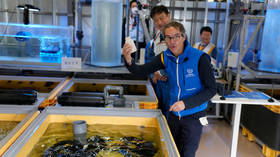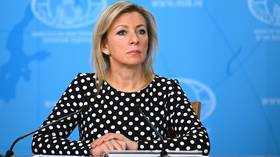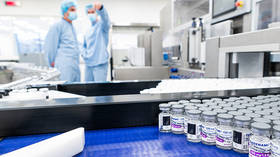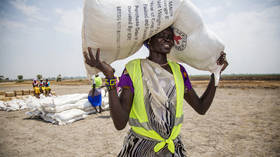Fukushima pours more radiation-purified water into Pacific Ocean
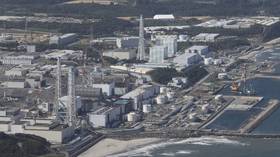
The operator of Japan’s Fukushima Daiichi nuclear power plant has begun releasing a second batch of treated radioactive wastewater into the Pacific Ocean. The company maintains that the process is safe, but Japan’s neighbors have condemned the move as “irresponsible.”
The Tokyo Electric Power Company (TEPCO) said that the release began on Thursday morning. Around 7,800 cubic meters of water will be dumped over the next 17 days, a fraction of the 1.33 million cubic meters still sitting in 1,000 tanks at the plant.
TEPCO started releasing a first batch of 7,800 cubic meters in late August, after receiving approval from the International Atomic Energy Agency. The water, which had been used to cool nuclear fuel at the tsunami-stricken facility, has had all of its radioactive contaminants filtered out except tritium, a radioactive isotope of hydrogen.
The tritium is diluted with seawater at the end of the filtration process, and the mixture is pumped into the ocean. Following the first release, TEPCO scientists said that the level of tritium near the dump site was just above the lower limit of detection and 6,000 times lower than the maximum permissible level.
Japan has been heavily criticized by neighboring countries over the disposal plan. When a timeline for the scheme was first announced earlier this year, the Chinese Foreign Ministry called it “extremely irresponsible,” declaring that “contaminated water impacts the global marine environment and public health.”
China has since banned the import of fish and seafood from Japan. Tokyo has called the ban “scientifically unfounded,” and lodged a complaint with the World Trade Organization.
Russian authorities have confirmed that fish caught after the first release have not shown excessive levels of radiation.
Emptying the 1.33 million cubic meters of wastewater at Fukushima will take at least 30 years, as only 10 out of 1,000 storage tanks are released in each batch. This process is hindered by the fact that the nuclear fuel remaining at the plant must be kept cool, a process that generates more contaminated water that must be treated and released.
The Fukushima Daiichi nuclear power plant was destroyed by a magnitude 9.0 earthquake and tsunami on March 11, 2011. Three of its reactors melted down, releasing large quantities of radiation and prompting mass evacuations from areas along Japan’s east coast. The Fukushima disaster was the worst nuclear accident since the 1986 Chernobyl meltdown.
